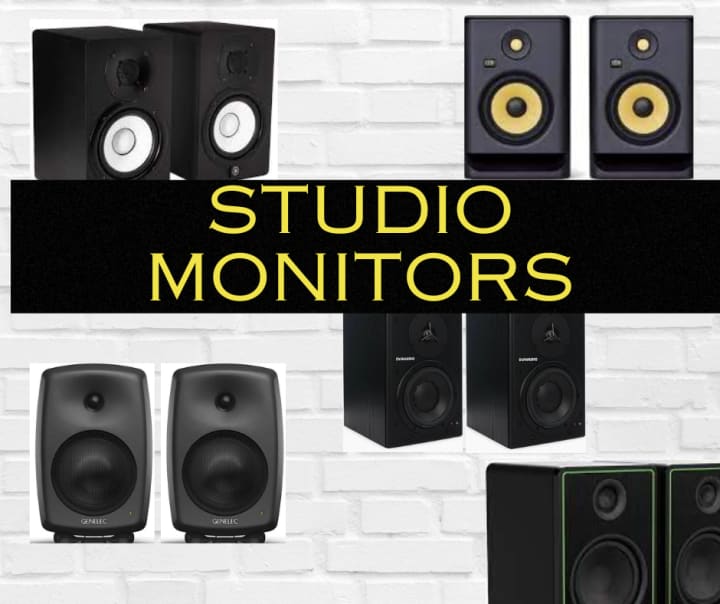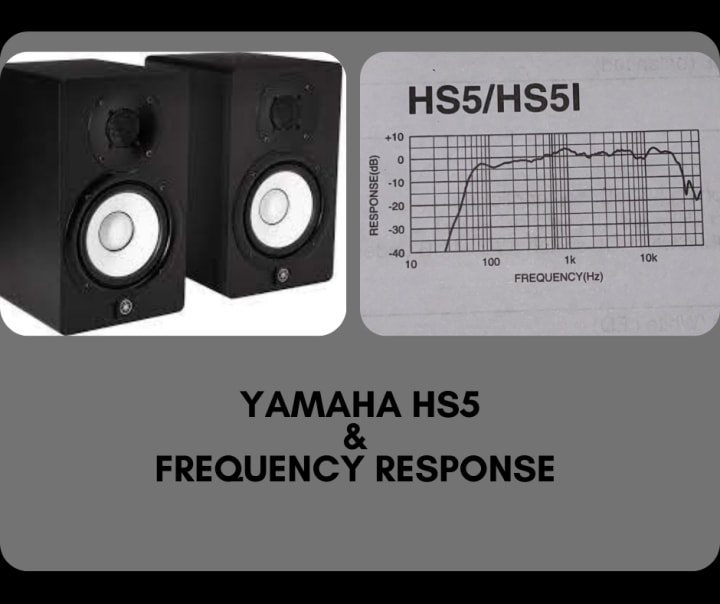Studio Monitors
Navigating the Speaker Maze for Your Home Studio

Selecting the right speakers for your home studio is important. Speakers play a pivotal role in translating every musical detail influencing the creative process. Whether you're cleaning mixes, recording, or enjoying music. Speakers impact how you perceive and produce sound. Accurate speakers aid in decisive decision-making and contribute to an immersive listening experience. When considering studio monitors it's important to take careful consideration, as the proper speakers can transform your home setup.

Essential Speaker Considerations
There are key considerations before you purchase speakers. Such as speaker placement, far-field and near-field monitoring, and the choice between active and passive speakers. All factors to consider when setting up a home studio.
Speaker Placement
Speaker placement significantly influences the overall sound quality in a room. Placing speakers at the ideal height and distance and room acoustics, and avoiding reflections off surfaces. Provide speakers with elevation using speaker stands.

Far-Field vs Near Field Monitoring
Far-field monitoring, where speakers are placed at a distance from the listener, is ideal for larger studio spaces, offering a natural representation of sound. In contrast, near-field monitoring, with speakers positioned closer to the listener, is beneficial in smaller rooms, minimizing room effects and providing a more direct, focused sound.
Active and Passive Speakers
Active speakers have built-in amplifiers. Active speakers don't need external power from outlets to power simplifying setups. Passive speakers require external power amplifiers for them to function and produce sound. If you opt for passive speakers, you will indeed need an additional piece of equipment, the power amplifier, to drive and amplify the audio signals.
Considering these aspects during the initial stages of home studio setup ensures an accurate listening environment, facilitating precise audio production and enhancing the overall quality of the recording and mixing process.
Now with key insights into studio monitor considerations. The next focus is the speaker frequency response chart. This could be a graph or chart that tells us how the speaker reproduces the sound across different frequencies. This directly influences the accuracy of audio representation. Understanding the chart enables you to make informed decisions in selecting speakers, ensuring they align with your creative vision.
Speaker frequency response charts provide a visual representation of how well a speaker reproduces sound across the audible frequency range. The frequency response of a speaker is typically measured in Hertz (Hz). The chart shows the amplitude (volume) of the sound at different frequencies.

Here are key points to understand about speaker frequency response charts:
X-Axis: Frequency Range
The x-axis represents the frequency range in Hertz (Hz), typically ranging from low frequencies (bass) on the left to high frequencies (treble) on the right.

Y-Axis: Amplitude/Level
The y-axis represents the amplitude or volume of the sound at each frequency. It shows how loud or soft the speaker produces sound at different frequencies.
Flat Response
A flat response means the speaker produces all frequencies at an equal volume, Often considered ideal for accurate audio reproduction.

Bass and Treble Response
Speakers may have specific bumps or dips in certain frequency ranges.
Roll-Off
The chart may indicate a roll-off at the extreme low or high frequencies. A roll-off means that the speaker's response decreases in level at specific frequencies.
Crossover Points
In systems with multiple drivers/speakers (such as woofers, midrange, and tweeters), the chart may show crossover points where different drivers handle specific frequency ranges. If you're using studio monitors, especially those designed for near-field monitoring, they are typically designed with built-in crossovers. These crossovers are set to ensure a balance. When using passive speakers with an external amplifier, you might need to consider the crossover points between different drivers if your speakers have separate woofers, midrange, and tweeters.
When interpreting a frequency response chart, it's important to consider the intended use of the speaker. For example, studio monitors often aim for a flat response to provide an accurate representation of audio, while consumer speakers may have a more colored response for enhanced listening enjoyment.
5 Speakers Tailored for Your Perfect Setup

The Mackie CR5-XBT active studio monitors. Compact and powerful with 5-inch woofers, they provide a balanced frequency response. Bluetooth connectivity adds versatility and user-friendly features make them a solid starting point. Affordable yet high-quality, these monitors are ideal for recording, mixing, and casual listening.

The Yamaha HS5 active studio monitors with a 5-inch cone woofer and 1-inch dome tweeter, deliver a clear and accurate frequency response, crucial for audio monitoring. Known for their reliability and flat response, the HS5 monitors are ideal for mixing and recording tasks. Their sleek, minimalist design complements any studio setup and durability. The absence of exaggerated bass or treble frequencies makes them well-suited for learning the intricacies of audio production. For beginners seeking quality, reliability, and affordability, the Yamaha HS5 monitors provide a solid option.

The Dynaudio BM 6A active studio monitor offers exceptional accuracy and clarity, an excellent choice for someone starting their home studio setup. With a 7-inch woofer and a 1.1-inch soft dome tweeter, these monitors deliver a balanced and detailed sound reproduction across the frequency spectrum. The BM 6A is known for its transparent sound, providing an honest representation of audio material, making it ideal for critical listening and accurate mixing decisions. Its durable craftsmanship reflects Dynaudio's commitment to professional audio monitoring.

The Genelec 3 studio monitors are an excellent choice for home studios. Despite their compact size, these monitors show out with a 3-inch woofer and a 3/4-inch tweeter, delivering clear and detailed sound reproduction. Known for accurate reproduction of sound. Genelec monitors are well-known in the professional audio industry, making them a reliable choice. The compact design makes them suitable for smaller spaces. The advanced Directivity Control Waveguide technology helps create a precise and wide listening area. When starting your home studio journey and seeking high-quality sound in a compact form, the Genelec 3" powered monitors provide an excellent entry point.

The KRK Rokit 5 G4 active studio monitors. Featuring a 5-inch Kevlar woofer and a 1-inch tweeter, these monitors deliver a balanced and accurate sound representation, crucial for learning the nuances of audio production. The inclusion of built-in room correction technology helps optimize the sound in various environments, making them user-friendly. With a reputation for reliability and affordability, the KRK Rokit 5 G4 monitors provide a solid foundation for beginners looking to produce high-quality audio.
In conclusion, selecting the right home studio monitors can impact the quality of your audio production journey. From the precision of the Dynaudio BM 6A to the versatility of the Mackie CR5-XBT, and the accuracy of the Yamaha HS5, Genelec 3, and the popular KRK Rokit 5 G4, each monitor has features that cater to your specific needs. Remember, the best choice ultimately depends on your preferences, room acoustics, and the type of music you're creating. Investing time to understand each monitor's characteristics will undoubtedly contribute to a more informed decision.
About the Creator
Enjoyed the story? Support the Creator.
Subscribe for free to receive all their stories in your feed. You could also pledge your support or give them a one-off tip, letting them know you appreciate their work.





Comments
There are no comments for this story
Be the first to respond and start the conversation.